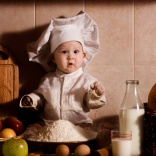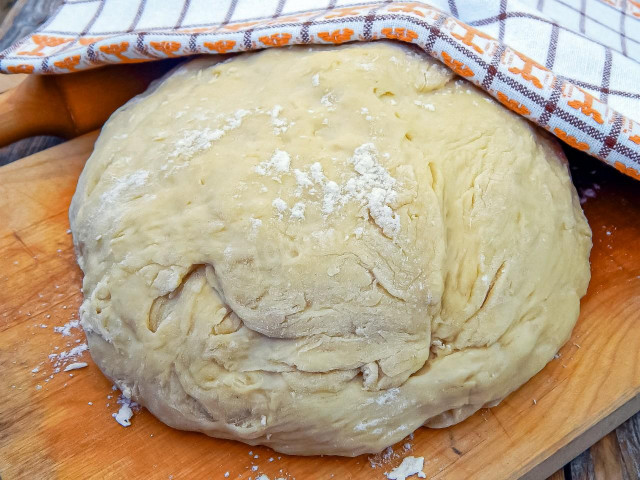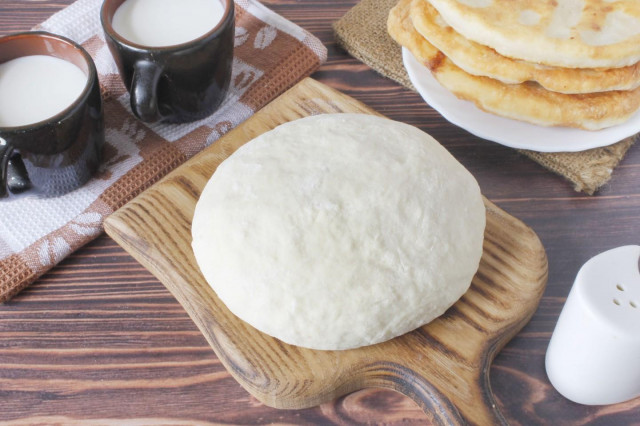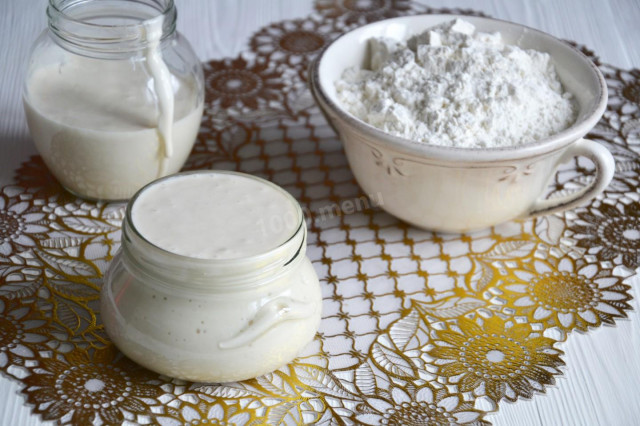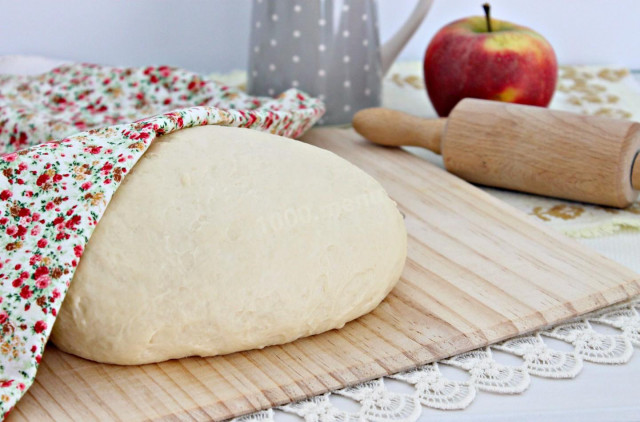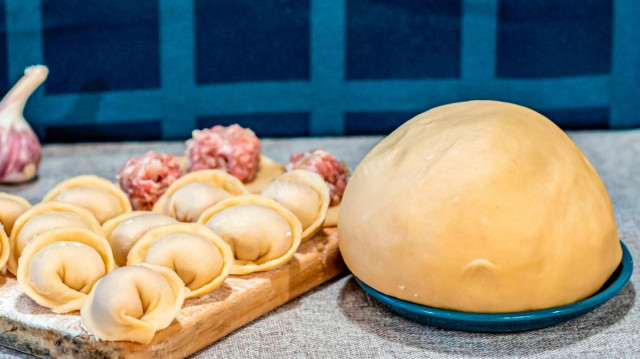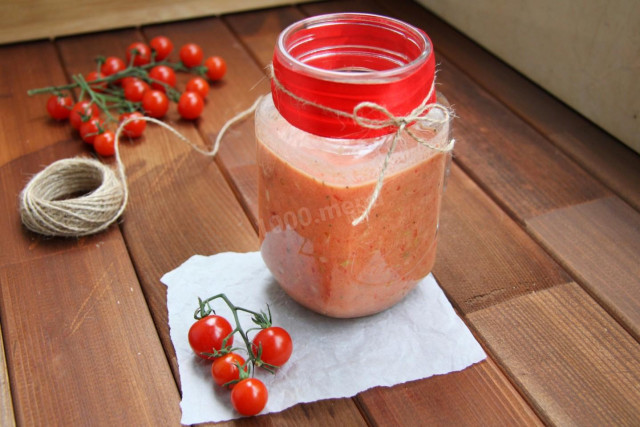Composition / ingredients
Step-by-step cooking
Step 1:
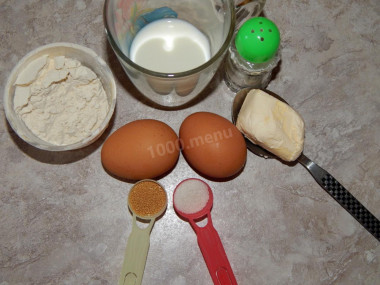
How to make yeast dough for milk buns? Prepare the ingredients. All products for yeast dough should be at room temperature. Violation of the yeast dough preparation procedure, non-compliance with the temperature regime can adversely affect the result, the yeast will die and the dough will not work. Pay special attention to the quality of yeast.
Step 2:
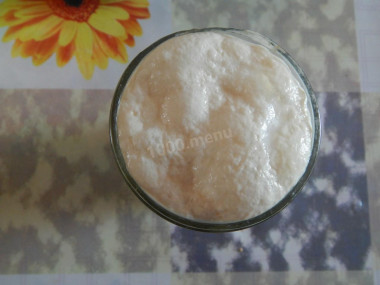
Prepare the sourdough (this will also check the quality of the yeast). In a glass of warm milk (no higher than 40 degrees), dissolve a tablespoon of sugar. Add yeast and a tablespoon of flour. Yeast loves a sweet and warm environment. Leave the container with the sourdough in a warm place for 15 minutes. A foam cap should appear, which means that the yeast is alive and they are activated. If there is no cap, replace the yeast.
Step 3:
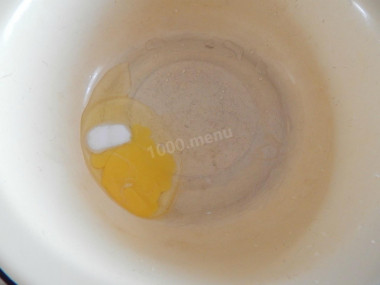
Melt the butter in a water bath or in a microwave oven, let it cool down a little. Sift wheat flour twice through a sieve so that it is saturated with oxygen. This is the second important rule of preparing yeast dough. Wash and dry the chicken eggs with napkins. In a separate bowl, beat the chicken eggs.
Step 4:
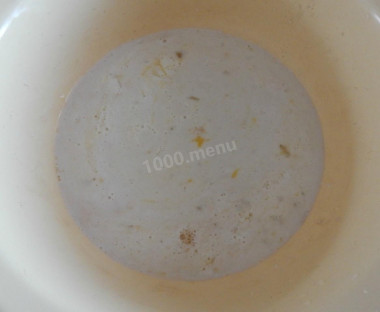
Pour sourdough to the eggs, add warm melted butter. Mix it up. Add the remaining sugar and salt.
Step 5:
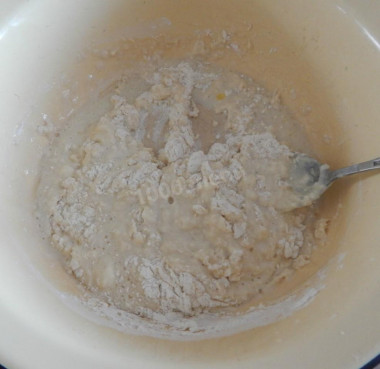
Pour in the sifted flour. Do this in parts, each time kneading the dough with a spoon or whisk. Flour may go more or less than the specified amount in the ingredients. When the dough becomes difficult to mix with a spoon, transfer it to a floured table and continue kneading until the dough comes together in one ball. The dough should turn out elastic, slightly sticky to the hands.
Step 6:
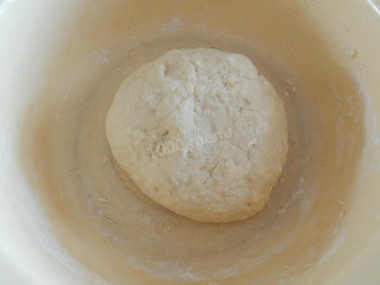
Put the dough in a bowl, cover the bowl with a towel and leave in a warm place for about two hours. During this time, the dough should increase in volume at least twice. When the dough is ready, knead it and let it rise again.
Step 7:
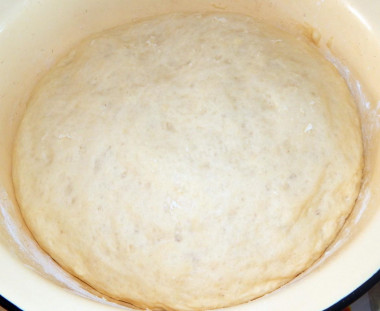
After the second rise, the dough is ready. You can start cooking and baking buns or pies, pies. Bon appetit!
Be prepared for the fact that you may need more or less flour than indicated in the recipe. Focus not on the amount of flour, but on the desired consistency of the dough. To avoid mistakes, read about flour and its properties!
Many people love fresh sweet pastries for tea. For example, a soft and airy bun for breakfast with butter and jam, or sausage and cheese. Such buns can be made at home. Of course, you will have to tinker a little with the yeast dough, but the result will surely please you and your household. The buns will turn out much tastier than store-bought pastries, in addition, the dough can be made taking into account your taste: sweeter, more comfortable, with or without filling, with sprinkling and so on. There are many recipes for the dough, one of the simplest is yeast in milk.
Caloric content of the products possible in the composition of the dish
- Whole cow's milk - 68 kcal/100g
- Milk 3.5% fat content - 64 kcal/100g
- Milk 3.2% fat content - 60 kcal/100g
- Milk 1.5% fat content - 47 kcal/100g
- Concentrated milk 7.5% fat content - 140 kcal/100g
- Milk 2.5% fat content - 54 kcal/100g
- Granulated sugar - 398 kcal/100g
- Sugar - 398 kcal/100g
- Butter 82% - 734 kcal/100g
- Amateur unsalted butter - 709 kcal/100g
- Unsalted peasant butter - 661 kcal/100g
- Peasant salted butter - 652 kcal/100g
- Melted butter - 869 kcal/100g
- Salt - 0 kcal/100g
- Wheat flour - 325 kcal/100g
- Chicken egg - 80 kcal/100g
- Dry yeast - 410 kcal/100g
